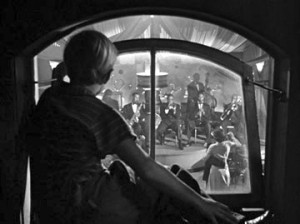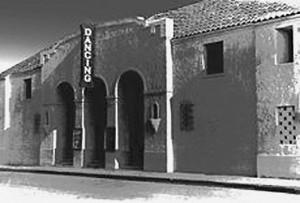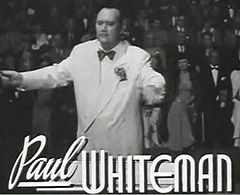“I’d rather play a trumpet than a piano – I don’t know, seems like it’s closer up to your head somehow. You play a piano you play it way down here, but with a trumpet you put it right up beside you on your mouth and it feels like you got more to do with it.”—Rick Martin, age fifteen.
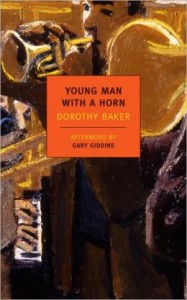 In this newly reprinted, remarkably “fresh” novel from 1938, considered the “first jazz novel” ever written, author Dorothy Baker takes the reader into the mind and heart of a young white boy whose desire to excel as a creative jazz musician in the 1920s is so overwhelming that he lets nothing get in his way – not the fact that he is only a child when he begins to pursue his interest, not the fact that he is an orphan living virtually alone with a young aunt and uncle who are home only once or twice a week, not the fact that he is supposed to be in school, and not the fact that he has no instrument at all that he can play. Born in Georgia, Rick Martin has recently moved to a poor section of Los Angeles where his guardians have found work. Though he is not a good student in his school’s assigned subjects (and cannot remember how much seven times seven is), he has learned to read music and “could memorize like a flash anything that had any swing to it, anything that he could take hold of rhythmically.”
In this newly reprinted, remarkably “fresh” novel from 1938, considered the “first jazz novel” ever written, author Dorothy Baker takes the reader into the mind and heart of a young white boy whose desire to excel as a creative jazz musician in the 1920s is so overwhelming that he lets nothing get in his way – not the fact that he is only a child when he begins to pursue his interest, not the fact that he is an orphan living virtually alone with a young aunt and uncle who are home only once or twice a week, not the fact that he is supposed to be in school, and not the fact that he has no instrument at all that he can play. Born in Georgia, Rick Martin has recently moved to a poor section of Los Angeles where his guardians have found work. Though he is not a good student in his school’s assigned subjects (and cannot remember how much seven times seven is), he has learned to read music and “could memorize like a flash anything that had any swing to it, anything that he could take hold of rhythmically.”
At fourteen he becomes a truant, “discontinuing his studies” to hang around All Souls’ Mission, a black church which is open, but empty, all day long. There he discovers his Holy Grail, a piano. Regarding the Mission as merely “a room with a piano in it,” he goes there all day, every day, for months, teaching himself to play from the hymnals that are in plentiful supply. When a group of slightly inebriated early arrivals for a service unexpectedly discovers Rick, his blonde hair highlighted by the setting sun like a halo, they decide that Rick is an angel. Their attempt to get the Message they believe God may have given him devolves into impassioned yelling and praising of the Lord. Frightened, Rick escapes, no longer daring to return.
Knowing that he will never be able to buy a piano, he begins to haunt pawn shops looking instead for a trumpet, which he thinks he might be able to buy with money he earns as a pin-setter at a bowling alley. It is at the alley that he meets Smoke Jordan, an eighteen-year-old black man who gets so caught up in the rhythm of sweeping the alley’s floor that he forgets the purpose of his job and merely stirs up all the dust. Smoke is “a professional drummer with amateur standing” because he’s never been able to afford to get himself a union card, and he and Rick become best friends, inseparable, since neither of them has ever had a best friend, especially one who shares his interest in jazz. Their relationship is one of the treasures of this novel as these two come to trust each other completely, sharing their lives in unexpected ways, and when Rick eventually goes alone to the funeral of a musician friend, at which he is the only white mourner, he also comes to know Smoke’s family, which shows a kind of love for each other and for him that he has never known before, a passage of great warmth and beauty.
It is through Smoke that Rick is introduced to Los Angeles’s Cotton Club, though Smoke does not dare to take him inside. Neither Rick nor Smoke has any qualms about the other’s race, but Smoke is not so sure about the other people who spend their time at this all-black social jazz club. Smoke does not abandon his young friend, however, and he and Rick end up instead spending three or four nights a week for months, sitting outside and listening through the transom of the Cotton Club to all the jazz of Jeff Williams and his band. Eventually Rick meets the band, and persuades the trumpet player to give him informal lessons on the trumpet once a week.
“Fortune, in its workings, has something in common with a slot-machine. There are those who can bait it forever and never get more than an odd assortment of lemons for their pains; but once in a while there will come a man for whom all the grooves will line up, and when that happens there’s no end to the showering down.”
Within five years, Rick is playing trumpet with a dance band at the Rendez-Vous Ballroom in Balboa, down the coast from LA, which caters to college students during summer vacation, but he is chafing at the restrictions involved in playing prepared arrangements that have been consigned to paper instead of “flying” with his own creativity. By the age of twenty, he has moved to New York City. Here, too, however, life becomes more and more complicated for Rick, and it is in these last two sections of the novel that the author’s insights make Rick’s jazz life and the conflicts that sometimes arise with his personal life come fully alive.
Basing the musical career (though not the life) of Rick Martin on that of the real jazz trumpet player Bix Beiderbecke, Dorothy Baker performs the remarkable feat of getting inside the head of Rick Martin, sensitively describing the details of how it FEELS to take a simple melody and then twist it, turn it upside down, and even inside out, so that it takes on a completely new life. She gives the less creative reader the ability to appreciate a jazz musician’s ability to recognize and savor that magic moment when his creativity with a particular solo or piece of music has reached its peak, while also recognizing that this moment with this piece of music will never happen again in quite the same way – each performance among jazz musicians is unique.
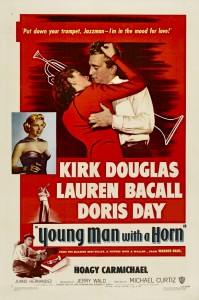
In 1950 Hollywood turned this sensitive novel into an extravagant showpiece for Kirk Douglas, Lauren Bacall, and Doris Day, with Hoagy Carmichael as the piano player.
The compulsion for a creative artist like Rick to continue going and going and going in search of the perfect sound, the perfect arrangement, and the perfect combination of instruments and thematic elements, no matter how exhausted he may be physically, is presented with sympathy and understanding, and it is here that Baker shows her full recognition of the possible hazards of the jazz-obsessed life. In order for Rick to stay up virtually around the clock, as he feels compelled to do in search of continuous “perfect moments” with his music, he begins to rely on alcohol to give him the energy he thinks he requires to perform both on and off-stage. Slowly but vividly, she shows the toll that this destructive pattern takes on Rick’s body, as it also did on that of Bix Beiderbecke, a sad but not unexpected result in this story of two shooting stars, one fictional and one real.
Note: Dorothy Baker (1907 – 1968) wrote this debut novel in 1938, one of four novels (some of them controversial) which she wrote before her death at age 61. She was married to poet Howard Baker.
Photos, in order: (The only photo of Dorothy Baker, the author, is one from her UCLA yearbook, one so small and fuzzy I did not use it.)
The photo of the youthful Bix Beiderbecke, long before he affected his mustache, is from https://data.desmoinesregister.com/famous-iowans/bix-beiderbecke
The photo of the boy in the transom window is from the film and appears on http://new-savanna.blogspot.com
The Rendez-Vous Ballroom in Balboa, CA, may be found on http://www.balboabattle.com
Paul Whiteman’s poster is from http://en.wikipedia.org The media referred to Whiteman as “the King of Jazz.” He was the most popular band leader in New York and, arguably, of the whole country in the 1920s and 1930s.
The poster for the 1950 Hollywood film extravaganza, starring Kirk Douglas, Lauren Bacall, and Doris Day is featured on http://en.wikipedia.org/ The film differs significantly from the novel, which is more sensitive, much less melodramatic.

